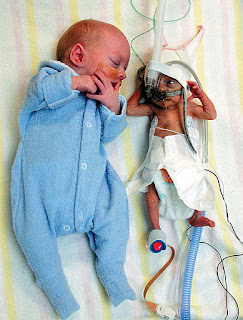Definition
Endometriosis can be defined as presence of endometrial tissue outside the uterus. These tissues are also called endometrial implants or ectopic endometrial tissues.
Commonly, endometriosis / ectopic endometrial tissues are found in the following places: 1)Peritoneum, 2)Ovaries, 3)Fallopian tubes, 4)Outer surface of uterus, bladder, ureters, intestine and rectum, 5)Pouch of Douglas (rectouterine pouch).
Pathogenesis
There are few theories that has been suggested as the underlying mechanism on how endometriosis can occur, including 1)theory of retrograde menstruation, 2)coelomic-metaplasia theory, 3)circulation and implantation theory.
Pathophysiology
Ectopic endometrial tissues have similar features with the endometrial tissue lining the uterus. Just like the endometrial lining of the uterus, ectopic endometrial tissues also undergo cyclical changes of the menstrual cycle and respond to changes of the estrogen level. As we know, menstruation is associated with inflammatory process. These repetitive inflammatory events eventually lead to scarring and adhesion. All these inflammation, scarring and adhesion lead to the clinical signs and symptoms of endometriosis and its complications, depending on where is the location of the ectopic endometrial tissues.
Woman with endometriosis may be presented with symptoms of abdominal/back pain, dysmenorrhea, dyspareunia, dysuria, or dyschezia. Some women may be presented with the complications such as chronic pelvic pain and subfertility.
Diagnosis
Endometriosis should be suspected when a woman in her reproductive age presented with severe dysmenorrhea, which is not improved with NSAIDs. On physical examination in women with endometriosis, there may be pelvic tenderness, or nodularity of the uterosacral ligaments and rectovaginal septum, and ultrasound may reveal ovarian cyst and endometrioma. Laparoscopic examination, which is the gold standard procedure to confirm the diagnosis, might be done and the suspected lesions are removed and sent for biopsy. However, laparoscopy for diagnosis is not necessary to be done before starting treatment with medications. Laparoscopy should generally be performed only when the surgeon plan to remove the lesions if endometriosis is discovered during the procedure.
Treatment
Treatment modalities in the management of endometriosis can be divided into medical treatment and surgical treatment. A woman with endometriosis may be treated medically or surgically or both. The aim of the treatment should be directed to improve patient’s symptoms and quality of life, and should be tailored based on the severity of the disease and patient’s fertility desire.









